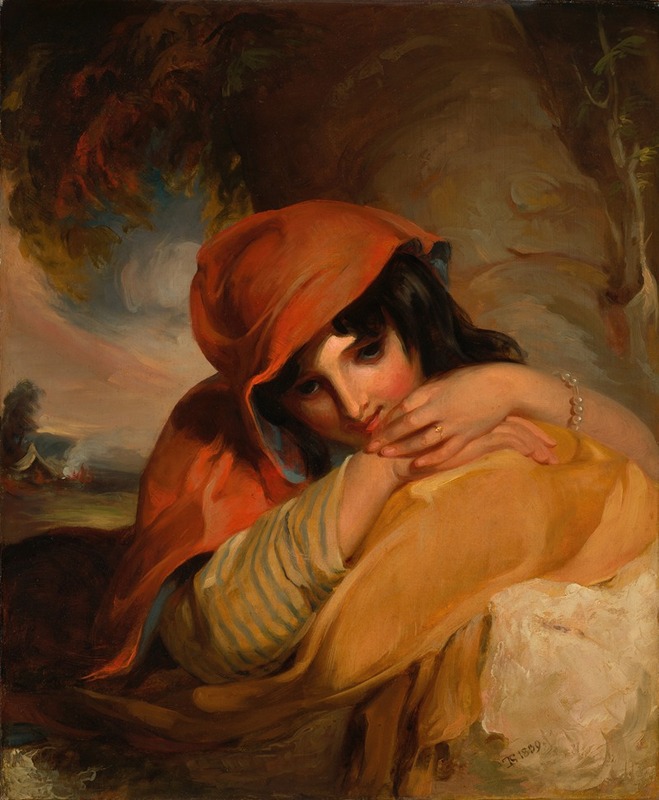
The Gypsy Girl
A hand-painted replica of Thomas Sully’s masterpiece The Gypsy Girl, meticulously crafted by professional artists to capture the true essence of the original. Each piece is created with museum-quality canvas and rare mineral pigments, carefully painted by experienced artists with delicate brushstrokes and rich, layered colors to perfectly recreate the texture of the original artwork. Unlike machine-printed reproductions, this hand-painted version brings the painting to life, infused with the artist’s emotions and skill in every stroke. Whether for personal collection or home decoration, it instantly elevates the artistic atmosphere of any space.
Thomas Sully's painting "The Gypsy Girl" is a notable work by the American portrait painter, who was active in the 19th century. Sully, born in 1783 in England, moved to the United States with his family in 1792. He became one of the most prominent portrait artists of his time, known for his elegant style and ability to capture the character and personality of his subjects.
"The Gypsy Girl" is a fine example of Sully's work, showcasing his skill in rendering the human form and his sensitivity to the nuances of expression. The painting depicts a young woman, often referred to as a "gypsy," a term historically used to describe the Romani people, though it is now considered outdated and potentially pejorative. The subject is portrayed with a sense of mystery and allure, characteristics often associated with romanticized depictions of Romani women in 19th-century art and literature.
Sully's technique in "The Gypsy Girl" reflects his training and influences. He studied under Gilbert Stuart, one of America's foremost portraitists, and was also influenced by the works of European masters such as Thomas Lawrence and Benjamin West. Sully's use of light and shadow, as well as his attention to detail in the textures of the girl's clothing and skin, demonstrate his mastery of the medium.
The painting is characterized by its warm color palette and the soft, diffused lighting that highlights the subject's features. The girl's expression is both serene and enigmatic, inviting viewers to ponder her thoughts and story. Her attire, while not detailed in historical accuracy, adds to the exotic and romanticized image that was popular in Sully's time.
"The Gypsy Girl" is part of Sully's broader body of work that includes portraits of prominent figures such as Thomas Jefferson, John Quincy Adams, and the Marquis de Lafayette. However, unlike these formal portraits, "The Gypsy Girl" offers a more intimate and personal glimpse into Sully's artistic exploration of character and mood.
The painting is housed in the collection of the Philadelphia Museum of Art, which holds a significant number of Sully's works. This institution provides context for understanding Sully's impact on American art and his role in shaping the visual culture of his era.
In summary, Thomas Sully's "The Gypsy Girl" is a testament to his skill as a portraitist and his ability to capture the essence of his subjects. While the painting reflects the romanticized views of its time, it remains a valuable piece for studying the intersection of art, culture, and identity in the 19th century.


















